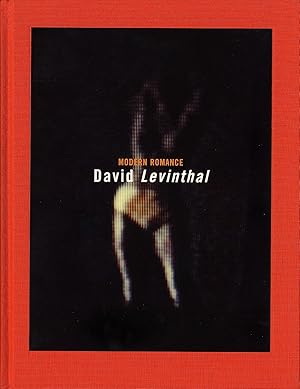American-born photographer Levinthal has earned national recognition by creating potent, ironic, and sometimes controversial visions using miniature figures and toys as characters in staged tableaux. Since publishing his first major work in 1977 (Hitler Moves East: A Graphic Chronicle, 1941-43), he has worked with Barbie, blackface memorabilia, toy soldiers, and various modeling figures to explore the icons and stereotypes of popular culture. Levinthal executed his series Modern Romance in the mid-1980s. Echoing the paintings of Edward Hopper and film noir, these are scenes of urban life in dreamy neon-lit color and television blues. Levinthal shows us figures lingering on street corners, entering movie theaters, passing through alleys, conversing in diners, and interacting in confined spaces. He also depicts the impersonal landscape of the city: cop cars on the streets, doorways, and murky bedrooms. Levinthal's lovely and vaguely troubling photographs house a tension of possibilities; with details obscured, they speak of solitude, sexual isolation, and urban anxiety. An illuminating essay by Eugenia Parry opens the book, nicely placing this formative series in both a personal and an artistic context. This is serious art, dealing with fascinating ideas. Highly recommended for contemporary art collections of academic and public libraries. Deborah Miller, Minneapolis--Library Journal
David Levinthal is a recipient of numerous grants and awards, including a Guggenheim Fellowship (1995), and an NEA Fellowship (1990-91). His work has been exhibited internationally, and is represented at the Whitney Museum of American Art, the Metropolitan Museum of Art, and the Los Angeles County Museum of Art.
Eugenia Parry is a widely respected scholar on the history of photography and art. She has been a Professor of Art at both Wellesley College and at the University of New Mexico. She has published extensively on the history of photography, and is the author of Crime Album Stories (ISBN 3-908247-18-7, Scalo Publishers) which blends elements of found photography, historical crime evidence, and fiction.




